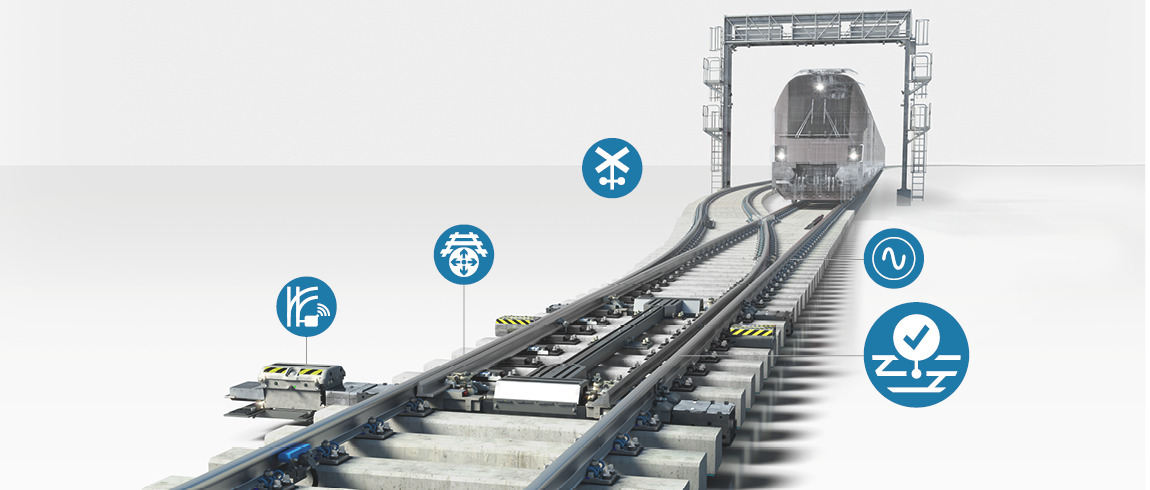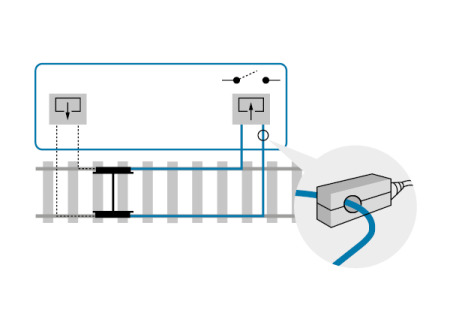zentrak Train Detection Monitoring
Train Detection Monitoring (TDM) systems can predict failures of various train detection methods and capture intermittent faults.
Train Detection Monitoring (TDM) systems can predict failures of various train detection methods and capture intermittent faults.

With our smart diagnostic and monitoring system zentrak we record the condition of your infrastructure continuously and comprehensively. The various methods of train detection (including track circuit or axle counter) are a vital part of many signaling systems and maintaining their performance is fundamental to the safety and efficiency of the rail network. The zentrak module Train Detection Monitoring (TDM) reliably identifies deterioration in performance and issues alerts to allow maintenance interventions before failures occur. This ensures short response times, optimum availability of the signal systems and allows the implementation of proactive condition-based maintenance.
Train detection methods keep trains safely apart and are connected to the interlocking. A train is detected as the leading axle enters each block or passes the axle counter and detected on the last axle leaving.
The TDM concept is based on a modular design, which allows easy expansion to include additional monitoring and integration with existing railway and IT systems on a number of levels. The system consists of sensors to measure physical or electrical parameters, field units including loggers and network equipment to collect, format and transmit the real time data and a back office server to analyze the accumulated data, announce alarms as required and host the web based user interface. The sensors are powered directly by the logger and do not require a separate power source. Usually everything is located inside control cabinets or equipment rooms.
No matter what rail transport or application area – TDM can be used by all railways:


TCCM – a subcategory of zentrak TDM – continuously monitors the health and performance of track circuits. Track circuit problems are often intermittent and difficult to investigate but account for a significant proportion of infrastructure related delays. Various solutions using non-invasive sensors have been developed to reliably identify deterioration in many common types of track circuit equip-ment, including DC, AC and audio frequency. The information collected enables maintainers to respond proactively to abnormal track circuit behavior and restore performance before operations are affected.
Different measurement technology and data processing is applied dependent on the track circuit type.
Energy levels at the track circuit receiver are monitored non-invasively using a hall effect sensor or current transducers. Depending on the type of track circuit, additional processing of the analogue signal or diagnostic data output from the track receiver may also be incorporated. Real time data from the output of the sensors is recorded and analyzed by a logger installed in the signaling equipment room or trackside equipment case using a system of multiband alarming to detect when the operating characteristics of a track circuit start to change. Alarm events and track circuit data are sent to the zentrak server from which users inter-act with a variety of internal enabled devices and see all sources of alarms and trends for further investigation.
For AC track circuits that use a phase sensitive ‘vane relay’, a patented synchronous detection technique has been developed that accurately represents the ‘torque’ current driving the relay. Measurement is made using non-invasive current transducers and the logger processes this information to calculate the current energizing the track relay. Interface sources such as DC traction current that do not affect the operation of the relay are rejected to create a realistic picture of track circuit performance
For modern microprocessor controlled track circuit equipment, local diagnostic outputs are often available carrying information about the condition and sta-tus of the system. For these situations, an application software that allows the logger to safely communicate with the receiver over a serial link has been specifically developed. One logger can communicate with several receivers and records status information for such as relay drive current, voltage, upper and lower sideband current and average input current.
The track circuit receiver current is monitored non-invasively using a Hall Effect sensor installed in a trackside equipment case or signaling room. Real time data from the output of the sensors is recorded by a logger which uses a system of multiband alarming to detect when the operating characteristics of a track circuit start to change.

Further options